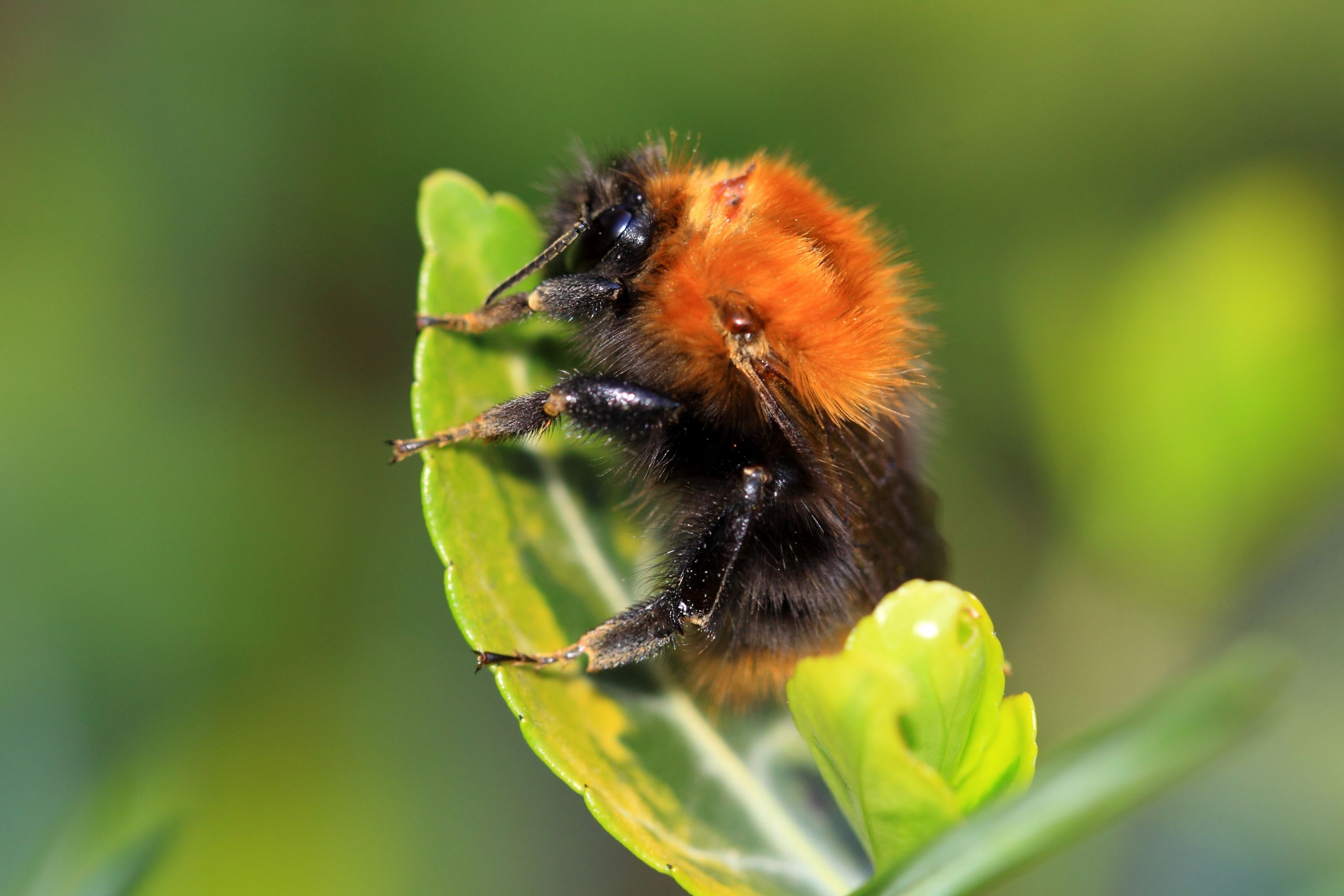Tree bumblebee
(Bombus hypnorum)

Description
The tree bumblebee or new garden bumblebee (Bombus hypnorum) is a species of bumblebee common in the European continent and parts of Asia. Since the start of the twenty-first century, it has spread to the United Kingdom and Iceland. These bumblebees prefer habitats that others do not, allowing them to pollinate flowers in areas that many other species do not get to. Bombus hypnorum has a short proboscis and a rounded head. The thorax is usually of a uniformly ginger color (but examples with a darker, or even black thorax occur), the abdomen is covered in black hair, and the tail is always white. In workers, the first tergite (abdominal segment) is black-haired, but a proportion of males may have ginger hairs intermixed with the black hair, both on the face and on the first abdominal tergum. On the European continent, individuals with extended yellow coloration exist. Workers are often (but not always) small, while drones are much bigger in comparison. The queens vary in size. B. hypnorum is a common bumblebee species in continental Europe and northern Asia, from northern France to Kamchatka in the east, and from the Pyrenees to the mountains in northern Europe. In the Balkans it is found in northwestern Greece. It is not found, though, in the Mediterranean, or the steppes of eastern Europe, only in the mountains of the Iberian Peninsula and not south of Tuscany in Italy. The bumblebee was first observed in United Kingdom on 17 July 2001 close to the village of Landford in Wiltshire and has since been spreading widely. In August 2008, B. hypnorum was found in Iceland, and new queens have been found each year since. It is likely that it will continue to stay in Iceland and prosper in close living with humans near dense settlements, such as Reykjavík, but will most probably not venture into the more rural and colder parts of Iceland. In the U.K., it has now spread from England up to the north of Scotland and Wales. This bumblebee often lives near human settlements. It prefers to build its nest above ground and often inhabits bird boxes. B. hypnorum likes to live in forests, but in places where there are not as many trees, it favours human dwellings. It likes to live in holes and walls in the trees unlike other members of the Bombus species. B. hypnorum does not stay in areas where there is a high amount of rapeseed cover.
Taxonomic tree:







